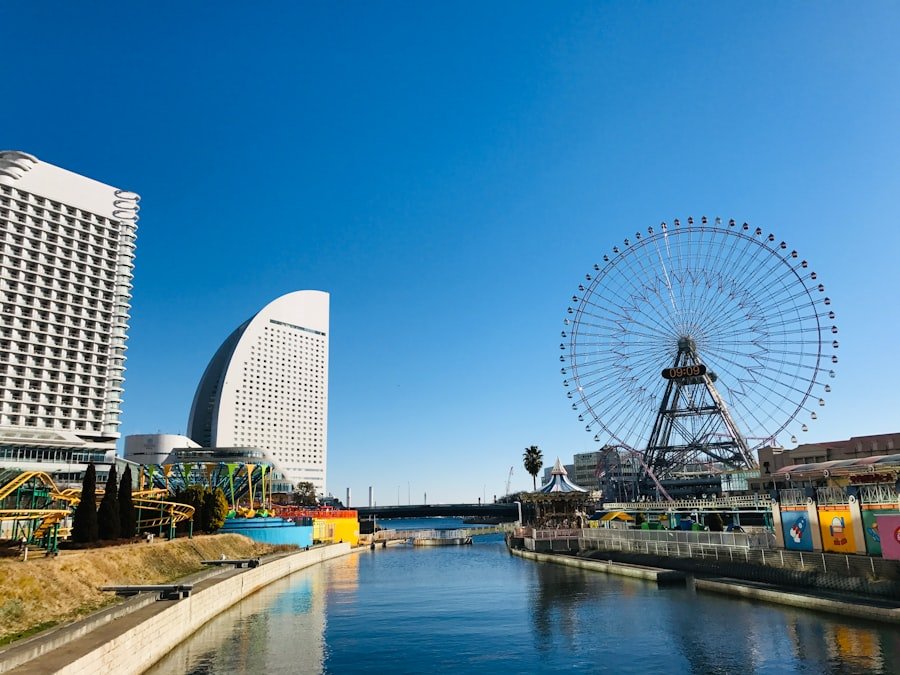

Responding to “O-genki desu ka?”: A Guide to Answering in Japanese
The phrase “O-genki desu ka?” is a quintessential part of Japanese conversational etiquette, serving as a polite inquiry into someone’s well-being. Translated literally, it means “Are you well?” or “How are you?” This greeting is not merely a formality; it reflects the deep-rooted cultural emphasis on interpersonal relationships and the importance of showing concern for others. In Japan, greetings are often laden with layers of meaning, and “O-genki desu ka?” is no exception.
It is a way to express care and consideration, establishing a connection between the speaker and the listener. Understanding the nuances of this greeting is essential for anyone looking to engage meaningfully in Japanese society. The phrase is often used in both formal and informal contexts, making it versatile.
However, its usage can vary depending on the relationship between the individuals involved. For instance, one might use it with colleagues, friends, or even strangers, but the tone and context will dictate how it is received. Thus, grasping the significance of “O-genki desu ka?” is the first step towards mastering Japanese conversational skills. Learn Japanese at the Norwegian Language School.
Table of Contents
ToggleSummary
- “O-genki desu ka?” is a common Japanese greeting meaning “How are you?”
- Polite responses include “Hai, genki desu” (Yes, I’m fine) or “Hai, arigatou gozaimasu” (Yes, thank you)
- Casual responses can be “Maa, so-so” (Well, so-so) or “Mou, chotto…” (Well, a little…)
- Express how you really feel with responses like “Chou genki” (Super fine) or “Meccha ungenki” (Really not well)
- Add politeness by using “Hai, genki desu, doumo” (Yes, I’m fine, thank you)
- Use a slight bow or a smile to accompany your response for politeness
- Avoid common mistakes like responding with negative emotions or ignoring the greeting
- Consider cultural differences and the importance of politeness in Japanese society
- Respond differently in situations like meeting someone for the first time or in a formal setting
- Practice exercises include role-playing different scenarios and responses
- Mastering the art of responding to “O-genki desu ka?” involves understanding cultural nuances and using appropriate language and body language.
Polite Responses to “O-genki desu ka?”
When someone greets you with “O-genki desu ka?”, responding politely is crucial, especially in formal settings. A common response is “Hai, genki desu,” which translates to “Yes, I am well.” This response not only acknowledges the inquiry but also reciprocates the sentiment of care. It is a straightforward yet effective way to maintain the flow of conversation while adhering to social norms.
Another polite response could be “Arigatou gozaimasu, genki desu,” meaning “Thank you, I am well.” This response adds an extra layer of gratitude, which is highly valued in Japanese culture. In more formal situations, such as business meetings or interactions with elders, one might opt for an even more respectful response. Phrases like “Hai, o-kage sama de genki desu” can be used, which translates to “Yes, thanks to you, I am well.” This response not only conveys your well-being but also acknowledges the other person’s role in your state of health, reinforcing the cultural importance of mutual respect and gratitude.
Casual Responses to “O-genki desu ka?”

In casual settings, particularly among friends or peers, responses can be more relaxed and informal. A simple “Genki!” suffices, which means “I’m good!” This brevity reflects the comfort level between friends and allows for a more laid-back exchange. Alternatively, one might say “Bokutachi wa genki!” which translates to “We are good!” This response can be particularly useful when addressing a group or when you want to include others in your sentiment.
Another casual response could be “Maa maa,” meaning “So-so.” This phrase indicates that while you may not be feeling your best, you are still managing. Such responses can lead to deeper conversations among friends who may wish to explore what’s bothering you or share their own experiences. Casual exchanges like these foster camaraderie and understanding, making them an essential part of social interactions in Japan.
Expressing How You Really Feel in Response to “O-genki desu ka?”
While politeness is paramount in Japanese culture, there are occasions when one might wish to express their true feelings more candidly. If you are feeling unwell or facing challenges, it is acceptable to share this with close friends or family. A response like “Chotto byouki desu,” meaning “I’m a bit sick,” can open up avenues for support and empathy.
This honesty can strengthen relationships as it invites others to offer help or simply lend an ear. However, it is important to gauge the context before divulging personal feelings. In more formal settings or with acquaintances, it may be wise to stick to neutral responses.
Nevertheless, expressing vulnerability in appropriate contexts can lead to deeper connections and understanding among individuals. It shows that you trust the other person enough to share your struggles, which can be a powerful aspect of building relationships.
Adding Politeness to Your Response
Politeness in Japanese culture extends beyond mere words; it encompasses tone, body language, and even the choice of vocabulary. To enhance your response to “O-genki desu ka?”, consider adding phrases that convey respect and gratitude. For instance, saying “Arigatou gozaimasu” (Thank you) before your response can set a positive tone.
You might say, “Arigatou gozaimasu, genki desu,” which not only answers the question but also acknowledges the other person’s concern. Additionally, using honourifics when addressing someone can elevate your politeness level. For example, if responding to a superior or elder, you might say “O-genki de irasshaimasu ka?” This variation shows respect and acknowledges their status while still engaging in the conversation.
Such nuances are vital for effective communication in Japan and demonstrate your understanding of cultural norms.
Using Body Language to Accompany Your Response

In Japan, non-verbal communication plays a significant role in conveying messages and emotions. When responding to “O-genki desu ka?”, accompanying your words with appropriate body language can enhance your message. A gentle nod while saying “Hai, genki desu” reinforces your affirmation and shows attentiveness.
Maintaining eye contact is also crucial; it signifies sincerity and engagement in the conversation. Moreover, facial expressions can convey a wealth of information. A warm smile while responding can create a friendly atmosphere and make your interaction more pleasant.
Conversely, if you are feeling unwell and choose to express that honestly, a more subdued expression may be appropriate. Being aware of these non-verbal cues can significantly improve your communication skills in Japanese culture.
Common Mistakes to Avoid When Responding to “O-genki desu ka?”
Navigating the intricacies of Japanese greetings can be challenging for learners. One common mistake is responding too casually in formal situations. Using informal language or slang when addressing superiors or elders can come across as disrespectful.
It’s essential to assess the context and adjust your language accordingly to avoid any faux pas. Another pitfall is failing to reciprocate the inquiry. In Japanese culture, it is customary not only to respond but also to return the question by asking “Anata wa?” (And you?).
Neglecting this aspect may give the impression that you are uninterested in the other person’s well-being. Therefore, always remember to engage fully in the conversation by acknowledging their concern as well.
Cultural Considerations When Responding to “O-genki desu ka?”
Cultural context plays a pivotal role in how one should respond to greetings like “O-genki desu ka?”. In Japan, there is a strong emphasis on harmony and avoiding conflict; thus, even if one is not feeling well, they may choose to respond positively out of politeness. Understanding this cultural nuance helps learners navigate conversations more effectively.
Additionally, it’s important to recognise that personal space and physical touch are approached differently in Japan compared to many Western cultures. While a handshake may be common elsewhere, bowing is often preferred as a greeting in Japan. Being aware of these cultural differences will enhance your interactions and demonstrate respect for local customs.
Responding to “O-genki desu ka?” in Different Situations
The context in which you find yourself greatly influences how you should respond to “O-genki desu ka?”. In a professional environment, maintaining formality is key; thus, responses should be respectful and courteous. For instance, saying “Hai, o-kage sama de genki desu” would be appropriate when speaking with colleagues or clients.
Conversely, among friends or family members, responses can be more relaxed and informal. You might say something like “Genki da yo!” (I’m doing great!) when chatting with close friends at a casual gathering. Understanding these situational dynamics will help you navigate conversations smoothly and build rapport with those around you.
Practice Exercises for Responding to “O-genki desu ka?”
To master responding to “O-genki desu ka?”, engaging in practice exercises can be immensely beneficial. One effective method is role-playing with a partner where one person asks the question while the other responds appropriately based on different contexts—formal versus informal settings. This exercise allows learners to experiment with various responses while receiving immediate feedback.
Another useful practice could involve writing down different scenarios where you might encounter this greeting and crafting suitable responses for each situation. For example, consider how you would respond at a business meeting versus a casual outing with friends. This exercise encourages critical thinking about language use and cultural nuances.
Mastering the Art of Responding to “O-genki desu ka?”
In conclusion, mastering the art of responding to “O-genki desu ka?” involves understanding its cultural significance and nuances within various contexts. From polite responses that reflect respect to casual exchanges that foster camaraderie among friends, each interaction offers an opportunity for deeper connection and understanding. By incorporating politeness into your responses and being mindful of body language and cultural considerations, you can navigate conversations with confidence.
For those eager to delve deeper into Japanese language learning and cultural nuances, consider enrolling in Japanese courses at the NLS Norwegian Language School. These courses provide comprehensive training that not only covers language skills but also emphasises cultural understanding—essential for anyone looking to engage meaningfully with Japanese speakers. With dedicated instructors and immersive learning experiences, NLS offers an excellent platform for mastering both language and culture effectively.
Ready to speak Japanese? Enroll for Japanese classes at the NLS Norwegian Language School!
If you want to learn Norwegian, you can register for classes here. We look forward to hearing from you and helping you become fluent in Norwegian.





